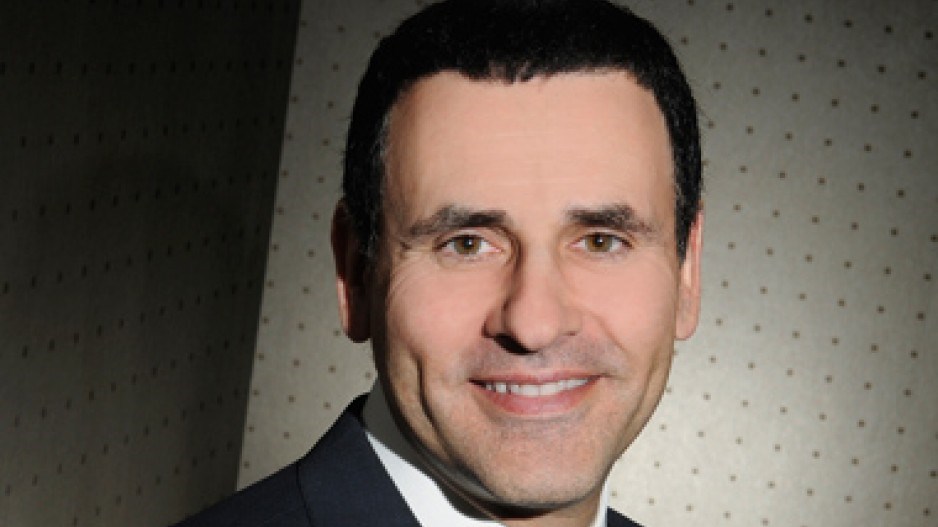As credit unions aren’t traditionally known for providing the diverse wealth of investments that big banks offer. But Doce Tomic is changing that.
As president and CEO of Vancouver-headquartered Credential Financial, Tomic heads the wealth management arm of Canada’s credit union system.
In the midst of the turmoil from the global financial crisis, Tomic has overseen Credential’s 65% jump in assets under administration to $14 billion from $8.5 billion. Much of that growth has come from expanding the wealth management offerings available to credit unions across the country.
“This is all organic growth, managing the wealth of members that already exists in the credit unions,” said Tomic. “More members are taking advantage of the service and expertise the advisers are providing, and members are moving more of their assets to a credit union.”
While the firm’s growth has been substantial since Tomic became Credential’s youngest CEO four years ago, the 47-year-old is planning for another 50% increase in assets over the next few years.
Executing business growth has been a hallmark of Tomic’s career. He started out in the industry in the late 1980s at Pemberton Securities and moved up the ranks after RBC bought the Vancouver firm. Tomic eventually become head of RBC’s wealth management arm, which had nearly $150 billion in assets.
Following his 15 years at RBC, he took on the position of chief operating officer for Winnipeg-based Wellington West, whose assets nearly doubled to $9.7 billion from $5 billion during his tenure with the company.
“He has extensive experience in wealth management,” said Chris Catliff, CEO of North Shore Credit Union (NSCU) and Credential’s board chair who was involved in the decision to hire Tomic.
“He started as an adviser himself and had run a portfolio, so the great story about Doce is that he worked his way up the trenches of wealth management. I like those kinds of leaders, who know what it’s like to be on the front lines.”
Catliff credits Tomic with transforming Credential and preparing the company for the ongoing evolution of Canada’s investment market and wealth management industry.
In January, the firm completed its transformation into a self-clearing brokerage firm, which allows it to facilitate in-house client trades of publicly traded investments directly with the stock exchanges like the TSX. To commemorate the milestone, Tomic opened the TSX on February 22 with Catliff and other company executives.
“It’s very significant for us to facilitate the trades [ourselves],” said Tomic. “We’ve opened up our own trading desk in Montreal, which will broaden our services capability and allow us to evolve our offering and expertise and give advisers and credit unions different offerings for their members as they see fit.”
That flexibility will be key for Credential, which works with local credit union members to create the most appropriate wealth management strategy for an organization’s members. An integral part of Credential’s business is consulting with many of the nearly 360 credit unions across the country, each of which caters to specific segments of its local market.
“It’s really important to understand the credit union’s strategy; what they are doing in their community, mapping out their business and tying wealth management into that.”
While not every credit union needs a discretionary wealth manager, Tomic still expects the credit union market for fee-based financial planning to grow in Canada. Big banks and independent firms have provided fee-based financial planning and discretionary money management to high-net-worth clients over the years, but Tomic said more “mass-affluent” Canadians with at least $100,000 in financial assets will increasingly be provided with similar services.
“As you go through more of an economic period with greater uncertainty, there is a greater demand and need for advice. That will bode well for credit unions that build up the knowledge and expertise in wealth management.”
Financial planning and wealth management has increasingly become a key area for many of B.C.’s largest credit unions. Coast Capital Savings, for example, posted a 17.5% rise in wealth management income in 2011, while First West Credit Union reported a 4.6% increase. (See “Focus on members key to co-op growth” – BIV issue 1181, June 12-18, 2012.)
The organizations are two local examples of credit unions tapping wealth management as an additional source of growth during a slowing residential real estate market and low interest rate environment that has reduced margins on residential mortgages. Organizations like NSCU have focused their branding and growth on wealth management services.
But while B.C. might be home to many of the country’s largest credit unions, Credential’s growth, given the relative market share credit unions enjoy across the country, has been fairly distributed across Canada.
“The credit union system is obviously very strong in B.C., very strong in Alberta and also in Saskatchewan and Manitoba,” said Tomic. “To say they’re competitive with the banks [there] is an understatement. The market share of credit unions in Saskatchewan is about 40% and 50% in Manitoba. Outside of the Greater Toronto Area, credit unions have also been growing quite strong in Ontario, and also in Atlantic Canada.”
That national reach means Tomic has a demanding travel schedule that requires him to be out of his downtown Vancouver office for half the month jetting to various parts of the country. But those travels should bear fruit in his goal of expanding Credential’s assets to $20 billion over the next three years. While many of Canada’s largest credit unions have worked with Credential to provide the full-service financial offering similar to the big-five banks, there are many more small to mid-sized credit unions that are still looking to tap a key component of the financial services market and deepen their relationship with their local members.
“As the foundational pieces of what we’ve done are done and the strategic work done, I expect our growth in wealth to continue,” Tomic said. “I expect our growth in insurance and the fee-based business to really expand over the next three to five years. Those two areas will lead our growth.”




